Microsoft BUILD: Windows 8, A Pre-Beta Preview
by Brian Klug & Ryan Smith on September 13, 2011 12:05 PM EST- Posted in
- BUILD
- Windows
- Microsoft
- Windows 8
- Trade Shows
The Metro UI
The best way to describe Windows 8 is a cross between the Metro UI from Window Phone 7 and the desktop architecture of Windows 7. In fact, virtually everything but the desktop gets a Metro treatment in Windows 8.
The Windows home screen starts initially hidden behind a lock screen virtually identical to WP7’s - slide up on a large edge-to-edge background to unlock. Inside is the Metro start screen, which is comprised of a grid of live application tiles that behave almost identically to those in Windows Phone 7. Two sizes of tiles serve as both application launch shortcuts and notification areas that can be populated with notifications, graphics, and other status indicators.
The tiles populate a horizontal strip that can be scrolled back and forth, and tiles can be rearranged accordingly. There are a few new gestures here over what we’ve seen before in WP7, including a swipe up to select a tile, and multitouch scrolling plus tile repositioning. Swipe up on tiles, and you can select them to convert size, uninstall, or unpin from the home screen.
The new start menu is more than a user experience oriented at tablets, it’s also the design language Microsoft has adopted for the entire new Windows 8 experience.
The thing to realize is that this modality isn’t so much a view as it is a combination of both new start menu, new interface for making Windows usable from a mobile perspective, and a completely new interaction paradigm. The interface is designed to perform and behave in the same way across multitouch, active digitizer, and keyboard+mouse combinations.
There’s another set of gestures and features as well which make use of the four edges of the display. The top and bottom are reserved for application-specific functions, the left and right are reserved for two Windows 8 specific tasks.
Sliding one’s finger from the left edge onto the display allows for both fast application changes, and the multiple-window snap functionality that’s been demoed already. The split is roughly 1:4 and divides horizontal real-estate between two applications views at once. The narrower of the two requires some additional development support, but the aim is to create a workable touch interface without sacrificing multitasking.
Swiping a finger from the right edge of the display towards the center brings up what Microsoft calls charms. This is a view that includes status indicators, and functionality like search, share, start, devices, and settings.
These respective shortcuts then bring up panes that occupy the same area on the right, and do what you’d expect. Settings for example is a place each application to build out a preferences area, so that each application has a common place users will go to control things.
Likewise, share acts like an intelligent copy paste, sharing working elements between applications. Finally search can either look through files and applications or dive into strings surfaced by other third-party applications.
These left and right based gestures exist across not just the Metro-infused start screen, but the entirety of Windows.
Moving around and getting back to the home screen is accomplished by pressing the Windows button, which on the tablet we were loaned is its own physical button analogous to iOS’ home button. Pressing the keyboard windows button performs the exact same action and summons the start menu.
The current set of first-party applications is pretty spartan. There’s no maps, mail, or camera application, though Microsoft has already bundled a set of its own internally-created applications. These are entirely Metro themed as well. I mention camera because the sample hardware includes a front facing and rear facing camera, and at present the only way to access them is through the change user tile picture function, which can capture a photo from the front or back webcam.
Throughout the entire OS is a very WP7-like virtual keyboard, which supports a full size and thumb keyboard mode. There’s also a handwriting recognition mode which has two lines of handwriting input and is styled similarly to Windows 7’s tablet input keyboard.
The keyboard can be docked to the bottom of the display or detached and dragged around as well. I find that the split keyboard accommodates typing with thumbs and holding the device midair quite well.


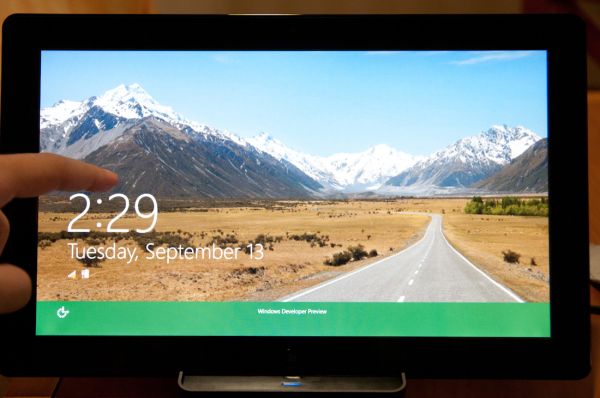
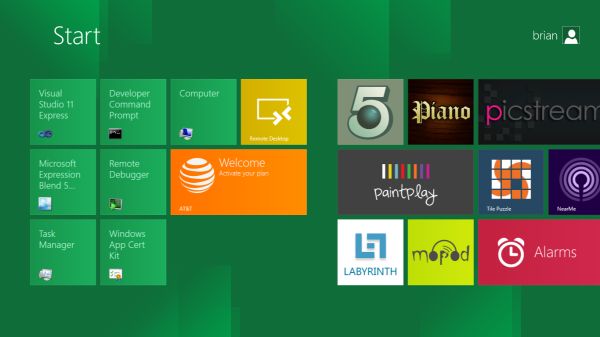
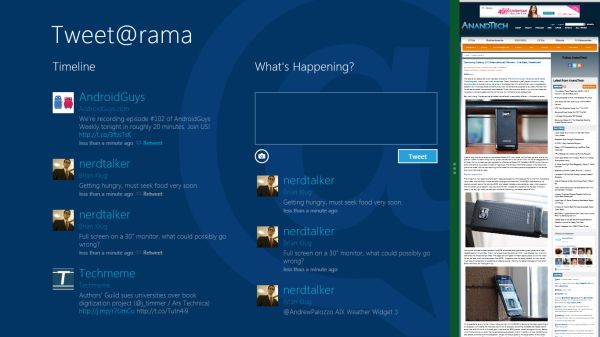
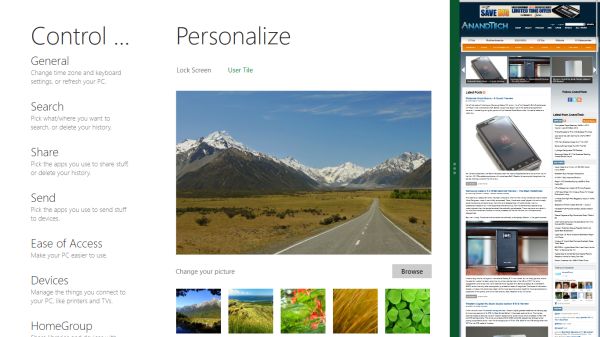

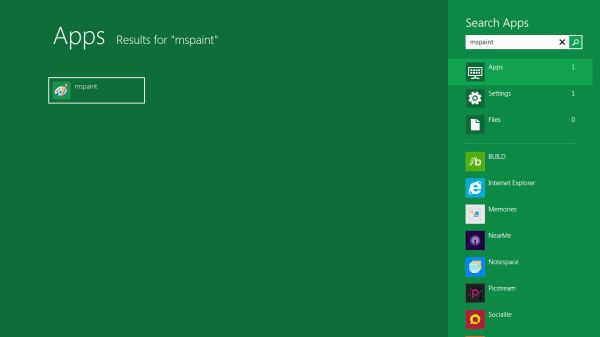
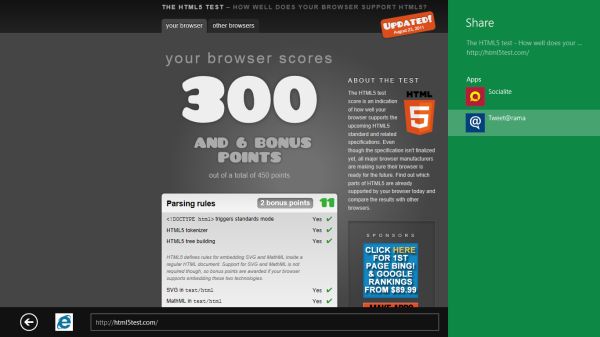
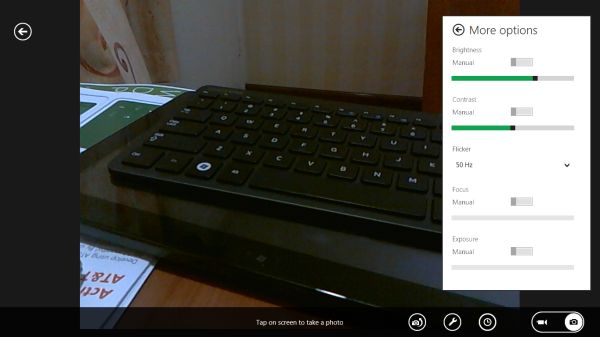
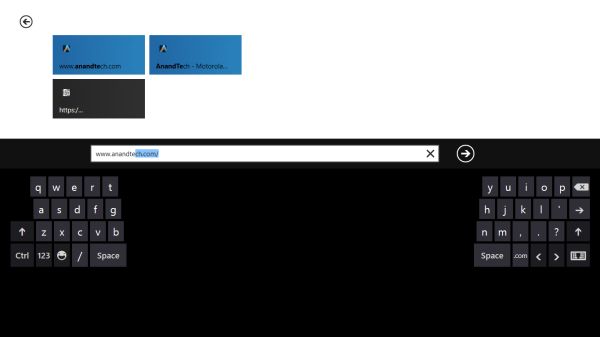








235 Comments
View All Comments
Saad_Salman - Tuesday, September 13, 2011 - link
I'm amazed how much MS is bragging about the so called 'windows tablet interface' with html5 (css & js) apps like it's never been done before. Dashboard? Remember something? Apple did it with Webkit application framework, with which, developers have been creating apps since OSX Tiger. Tiles are almost identical to dashboard with different ui.http://en.wikipedia.org/wiki/Dashboard_(software)
Bees - Tuesday, September 13, 2011 - link
How do we think it is going to handle multiple monitors? Will only one get the Metro treatment while the rest show the traditional desktop?tayb - Tuesday, September 13, 2011 - link
Metro is for portable devices. Slates, Tablets, etc. This will not be on your gaming rig.The freaking demo was done on a 11.1" tablet for crying out loud.
Not only that but if you don't like Metro no one, NO ONE, will force you to use it. And who in their right mind would use it on their desktop??? Haven't you seen the other screen shots of Windows 8? It's still a desktop OS. Metro is essentially an "add on" for mobile.
Rand - Tuesday, September 13, 2011 - link
It's helpful to read the article, and to read the tons of stuff MS has put up and all the live blogs from BUILD.You HAVE to use Metro, you have no choice. Microsoft WILL force you to use it, it is Windows. On all platforms you have Metro and you will be using it.
Metro is not as addon, it is the core of Windows.
Any time you launch an application or configure system settings, or bootup or anything of the like you will be using Metro. It cannot be disabled. There are no alternatives.
This will be on your gaming system, and your servers, and everything else. MS has made this abundantly clear. It's been stated in a dozen articles.
You cannot disable Metro.
rs2 - Tuesday, September 13, 2011 - link
"Microsoft WILL force you to use it, it is Windows."You seem to have confused Microsoft with Apple, and Windows with OSX. If anything, Microsoft has a fairly good track record of allow users to enable "Classic" features if they prefer them.
Rand - Tuesday, September 13, 2011 - link
No confusion, I just read what MS has said. Unless their lying, you cannot enable a classic experience.fausto412 - Tuesday, September 13, 2011 - link
is it really time for a new windows?Microsoft has lost its mind.
Malih - Tuesday, September 13, 2011 - link
But I know I'll be buying a Windows 8 tablet PC,or maybe if they can implement something like Kinect so you can operate the touch UI with non-touchscreen monitor, and do it from reasonable distance with good accuracy.
trip1ex - Tuesday, September 13, 2011 - link
MS is just creating the same tablets as they did before but with a tablet gui. And I think that is a mistake just as it was before.The end result is a big tablet with terrible battery life and heat issues at a high price. No one wants that as a tablet.
And no one wants the tablet form factor to use traditional desktop apps because then you might as well stick with the laptop.
And Win8 on ARM? Not seeing how they can pull that off and have decent battery life and performance still. I will believe it when I see it.
The beauty of the tablets i have used is the lightweight. The long battery life. The snappy performance for reading, email, video, and light weight tasks. The fact it gets out of the way. It is not just the form factor.
Win8 on ARM will be a mirage because Win8 will not truly work well on ARM
UMADBRO - Tuesday, September 13, 2011 - link
Once again, because you seem to have super powers and already know something about an unfinished product on unfinished hardware, you seem to be able to peer into the future and know everything there is to know about this. Bravo. Thank you for telling the masses your wonderful insight, instead of keeping it to yourself!